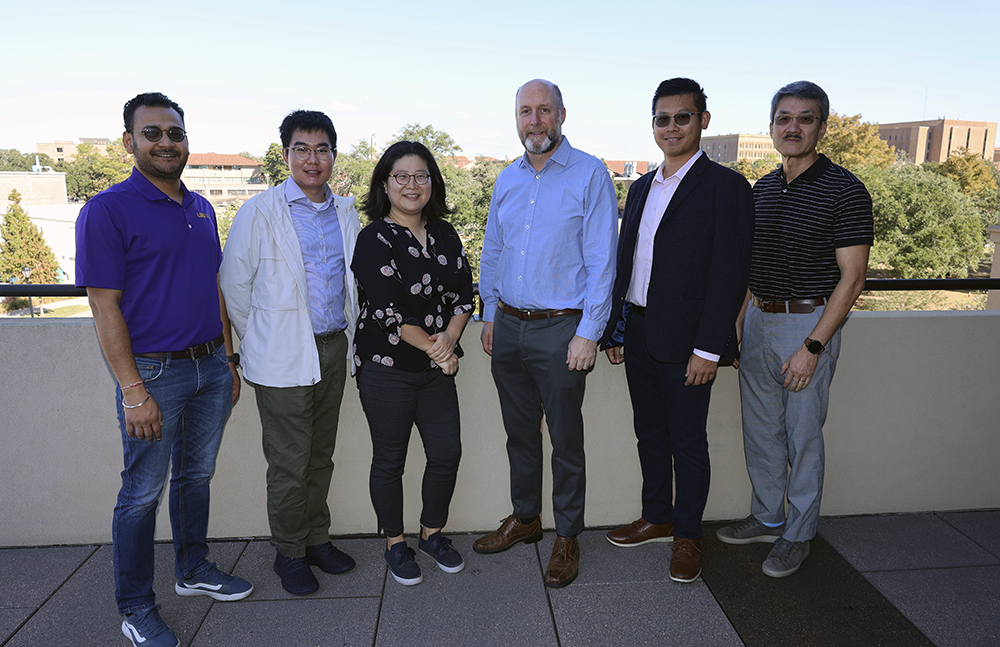LSU Construction Management Professor, Team Research Solar Energy in LA
 November 9, 2023
November 9, 2023
BATON ROUGE, LA – Louisiana has more sunny days than the national average, so why not put all of that summer heat to good use? Realizing the potential to harness the Sun’s energy, LSU Bert S. Turner Department of Construction Management Assistant Professor Arup Bhattacharya is researching solar power farming in the state thanks to a $94,000 grant from the Institute for Energy Innovation.
“This proposed project aims to evaluate multiple factors associated with designing, installing, and demonstrating solar farms in urban, open, or unused spaces,” Bhattacharya said. “The project team, consisting of a broad range of expertise and partnered with BASF Corporation, proposes to examine the variables associated with site selection, land reuse, occupant behavior, energy demand, and weather-dependent energy production through a holistic approach.”
Louisiana has a unique energy production and consumption scenario. The state has the third-highest energy consumption in the nation while also producing one-sixth of the nation’s total energy through non-renewable resources, such as petroleum and natural gas.
“Our state relies heavily on coal- and natural gas-powered power plants for energy,” Bhattacharya said. “More than 70% of Louisiana’s energy is consumed by the industry sector (not residential or transportation). The amount of energy being consumed by industry is unbelievably high. Using renewable energy could reduce the load on our existing grid. Also, with carbon emissions and global warming taking its toll on the planet, it’s more important than ever to search for alternate means of generating electricity and adopting renewable energy resources. Solar power is untapped energy potential that we should try to use.”
On average, Louisiana has 216 sunny days a year. The U.S. average is 207 days. In 2021, the Solar Energy Industries Association (SEIA) stated that Louisiana only produced 306 megawatts (MW) of solar energy. However, the state has the potential to produce up to 3,500 MW in the next five years due to the amount of land and sun exposure.
According to Bhattacharya, unused parking lots are the first places that could be utilized for solar farming.
“When we have solar farms, we want to look for empty land or think of land reuse,” he said. “In the U.S., there are 17 empty parking spots for one car. We have a lot of empty parking places that could be used for other things, such as installing solar panels that generate electricity. We’re also looking at unused jetties for solar panel space.”
Solar energy would not only cause less environmental harm; it would also create a drop in energy bill costs.
“The cost for solar power infrastructure is 54% cheaper than that of non-renewable resources,” Bhattacharya said. “When we use electricity produced by non-renewable resources, the prices are high because that type of energy requires a lot of maintenance.”
Bhattacharya and his team of LSU researchers will propose a mixed-method design framework for solar farm design that takes quantitative input from prospective users and quantitate approaches to model the energy demand versus energy supply in buildings and measure resilience against hurricanes and flooding through numerical simulation tools.
On Bhattacharya’s team are LSU Construction Management Assistant Professor Zhihong Pang, LSU School of Architecture Assistant Professor Soo Jo, LSU Coastal Ecosystem Design Studio IT Consultant Wen-Huai Tsao, LSU Department of Civil and Environmental Engineering Associate Professor Chris Kees, and LSU Construction Management Professor Yimin Zhu.
“With more sunny days than not, Louisiana is poised for large-scale solar deployment that can take this state to 14th place in the U.S. with a projected capacity of nearly 3,500 MW from solar power,” Bhattacharya said. “However, there are several issues related to such large-scale solar deployment in the state, ranging from aesthetic appearance, land development, and resilience from weather extremes. To design policies, there is an impending need to demonstrate studies that form interdisciplinary research teams, involve the community and students, and provide evidence-based implementation guidelines.”
Because Bhattacharya’s team’s project is a synthesis project, its research will have a quick turnaround time and quick results to inform policy making as opposed to a more long-term approach, considering experiments and fundamental science.
“We can do some measurements and run some tests, which enables us to share this information with policymakers in the next legislative session,” Bhattacharya said.
About the LSU Institute for Energy Innovation
The LSU Institute for Energy Innovation is transforming the way we generate, store, and use energy in Louisiana and around the globe. Established with a $25 million gift from Shell in 2022, the institute elevates groundbreaking research that not only advances the frontiers of knowledge but also translates into practical solutions and policy recommendations that foster economic growth and environmentally responsible energy for all. The core mission of the institute is to bring together scientists, engineers, and public policy experts with industry, government, and communities in Louisiana to work on research, development, and demonstration projects and policy recommendations to secure the state’s energy future in alignment with LSU’s Scholarship First agenda.
Phase I funding for synthesis and experimental research through the LSU Institute for Energy Innovation stimulates the development of interdisciplinary teams to help solve critical energy transition challenges for Louisiana industry, government, and communities. By advancing new technologies and knowledge and establishing best practices and common ground, awarded projects will provide solutions and answer pressing questions related to carbon capture and sequestration in Louisiana, including the long-term safety and monitoring of injection sites and financial compensation for landowners and parishes; the deployment of large-scale solar farms, including their long-term viability, aesthetics, and impacts; and environmental justice, including how to best measure community benefits resulting from the federal Justice 40 initiative and how to address complex social considerations of emerging energy technologies.
Like us on Facebook (@lsuengineering) or follow us on Twitter and Instagram (@lsuengineering).
###
Contact: Libby Haydel
Communications Manager
225-578-4840
ehaydel1@lsu.edu